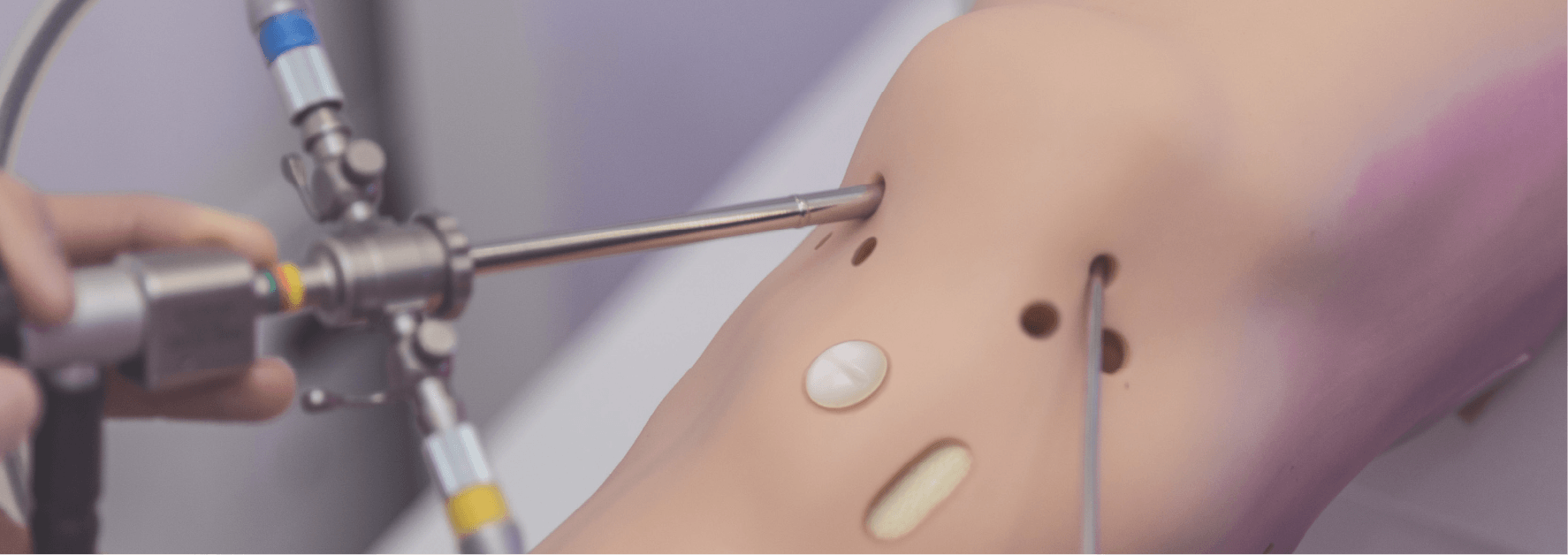

Training for Sports Medicine Surgeons
Athletes worldwide are continuously facing a high risk of injuries requiring surgical intervention that affects their personal and professional lives on different levels. At the same time, new surgical techniques are being developed for the repair of tears that have only recently been described such as meniscal ramp lesions.
To be able to keep up with the novel surgical techniques and to provide the highest quality of care, future orthopedic surgeons need a great amount of training. It has been shown that learning arthroscopic skills is associated with comparatively longer operation time and a higher rate of intraoperative complications.
Therefore, training should ideally happen in a highly realistic environment, but without harming patients.
ArthroS™ offers the most realistic and advanced arthroscopic simulation training for orthopedic surgeons, including practice cases for complex procedures such as a rotator cuff repair, an ACL reconstruction or meniscal repairs.
ACL Reconstruction
The complete rupture of the anterior cruciate ligament (ACL) is the most common injury found in football, basketball and volleyball players. Its reconstruction is commonly rated among the most essential skills in knee surgery.
The ACL Reconstruction simulation module contains learning content to practice and perform an anatomical ACL reconstruction via the anteromedial portal with a bone-patellar tendon-bone BTB graft and interference screw graft fixation.
Practice cases are designed to allow for the training of a specific step of the full procedure such as the femoral and tibial tunnel placements while Master cases include the full-length ACL Reconstruction procedure.
Cases were designed in collaboration with the Arthroscopy Association of North America (AANA) and use a proficiency-based progression training model.
Meniscal Repair
The meniscus is a frequently injured structure in the knee, not only by athletes. Meniscal lesions are also often found in association with ACL injuries. In recent years, there has been a trend towards repairing the meniscus whenever possible - "Save the Meniscus"!
The Meniscal Repair simulation module allows residents and fellows to train 4 different techniques depending on the meniscal tear type:
- the all-inside technique
- the outside-in technique
- the transtibial pullout technique for medial meniscus root tears
- the two-portal posteromedial approach for medial meniscus ramp lesions
All cases are available in an unguided and in a guided version, in which little helping elements guide the trainees through the exercise. The module was designed in collaboration with Prof. Romain Seil from Luxembourg.
Rotator Cuff Repair
Today, already more than 85% of rotator cuff tear surgeries are performed arthroscopically. The repair is technically demanding and requires extensive training prior to operating patients.
The Rotator Cuff Repair (RCR) simulation module was developed for the training of a double-row rotator cuff repair. Practice cases are designed to allow for the training of a specific step of the full procedure such as the medial and lateral row of anchor placements, while Master cases include the full-length RCR procedure.
Cases were designed in collaboration with the Arthroscopy Association of North America (AANA) and use their proficiency-based progression training model.

Our Partnership with AANA
The Arthroscopy Association of North America (AANA) and VirtaMed work together to advance and improve the training of arthroscopic surgery skills and standards for proficiency-based training curricula by leveraging the latest virtual reality simulation technology and AANA’s expertise in arthroscopic surgery education.
The Orthopedic Learning Center (OLC) in Rosemont, IL is equipped with VirtaMed ArthroS™ simulators for knee, shoulder and hip arthroscopy training, as well as FAST basic skills training. AANA regularly holds arthroscopy training courses, including sessions on the VirtaMed simulators.

Customer Testimonials

“Our goal is to improve patient care by advancing education in arthroscopy, and we want to ensure all arthroscopic surgeons have access to high-quality skills training and continuous education. Working with VirtaMed’s first-rate simulators, experienced developers and dedicated education specialists will help us reach that goal.”

“Do simulators save costs? I think they do, and they save lives. If you do something well a thousand times or ten thousand times, you just get better and better and better, and you remove the margin of error that can cause patients to have poor outcomes.“
Dr. John G. Kennedy, M.D., Hospital for Special Surgery, New York, USA

“VirtaMed ArthroS™ is a tremendous cost-saver. Every time a resident uses the simulator instead of cadavers or low-fidelity models, it‘s a 200-300 USD savings for the residency program“
Dr. James W. Bogener, M.D., University of Missouri, Missouri, USA
For more information about the VirtaMed ArthroS and its knee, shoulder, hip, ankle and FAST modules, visit VirtaMed | ArthroS™ simulator for knee, shoulder, hip, and ankle arthroscopy training.
